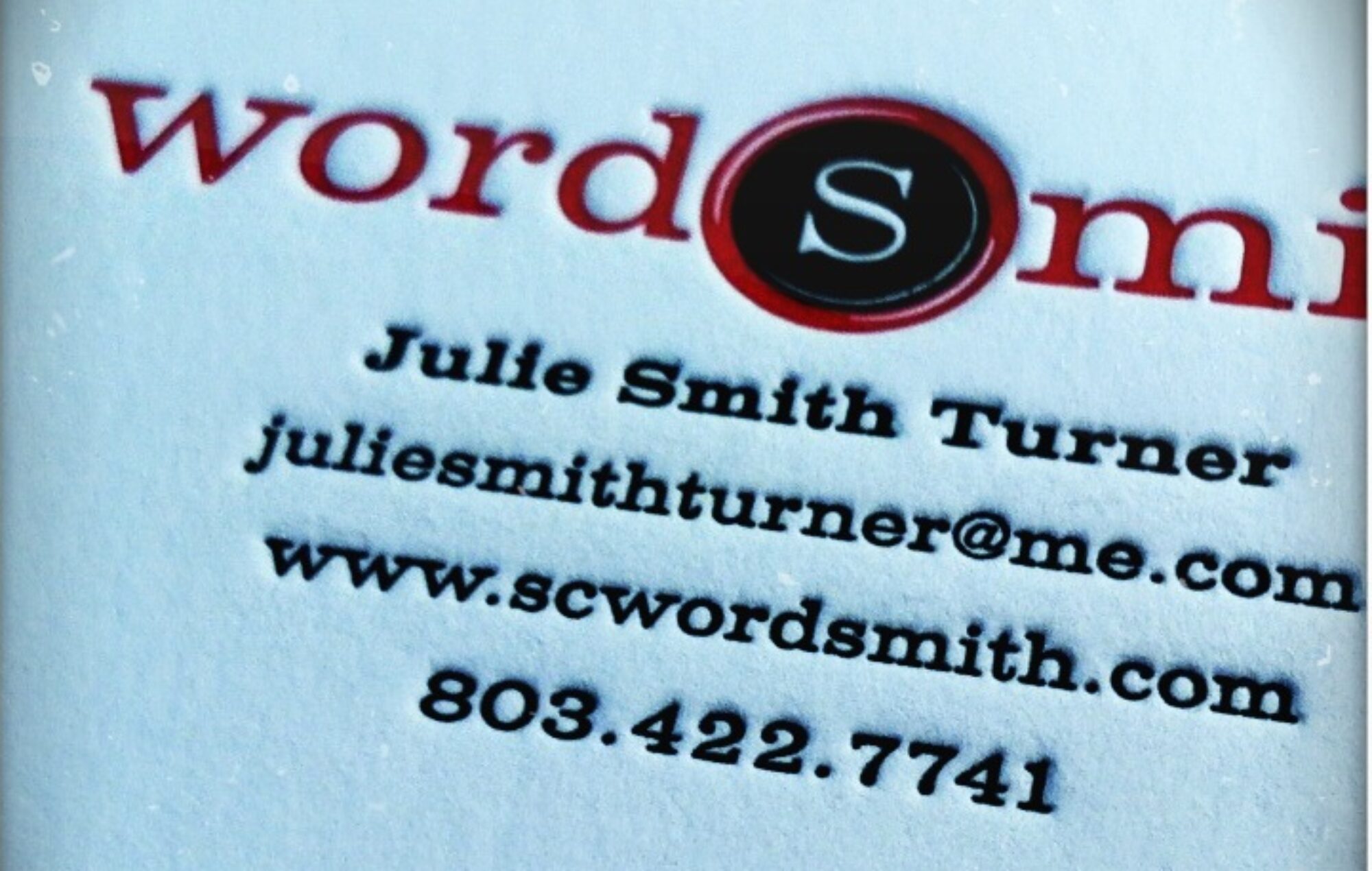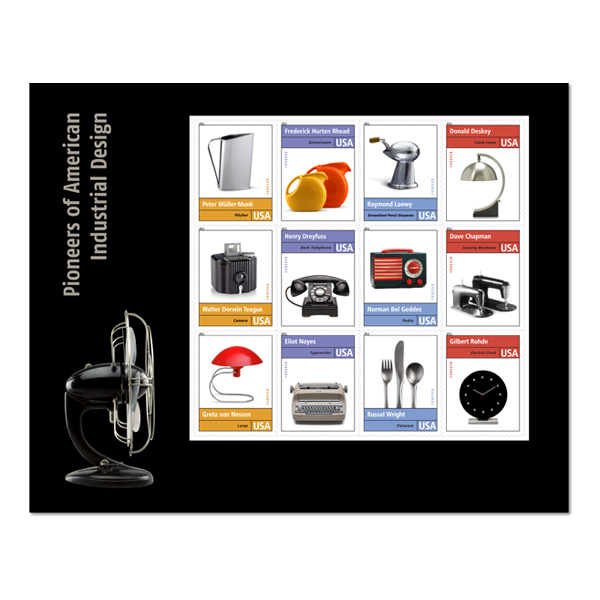Just like you change the color of walls or get a fresh ‘do, sometimes you need to take a look at the professional tools you use. Recently, I scoped out grammar style guides and blogged about it for my friends at Riggs Partners. Read here. What’s your style of choice?
Desk Clean-up: procrastination or organization?
I have a form of procrastination that’s proven useful for many years: desk cleaning and organizing. I have cleaned my desk off, cleaned co-workers’ desks off and restocked countless refrigerators that were not really low on drinks.
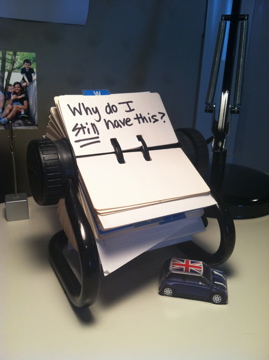 Squirreling away papers, filing old news clips and articles I couldn’t bear to toss or adding an extra six-pack of Coke because I wanted to be sure there were cold ones for later in the day. Selfishly, I have always viewed these tasks as means to get a day going that might be stuck in neutral. A quick, low hanging accomplishment I could check off my to-do list.
Squirreling away papers, filing old news clips and articles I couldn’t bear to toss or adding an extra six-pack of Coke because I wanted to be sure there were cold ones for later in the day. Selfishly, I have always viewed these tasks as means to get a day going that might be stuck in neutral. A quick, low hanging accomplishment I could check off my to-do list.
Now that my desk is my office, I view things differently. It’s no longer a luxury. I have to keep my projects straight and organized. I can’t spend time looking for things on my work desk or my computer desktop. Even worse, I can’t afford to lose anything.
In dissecting an early spring issue of Oprah magazine, I came across an article that suggested these tips for getting organized.
- Your desk should be like a driver’s seat. Have the important things within an arm’s reach. (Mr. Organizational Guru would no doubt tsk tsk my Tick action figures.)
- Think about your desk in terms of tasks. What do you actually do at your desk? (I keep all of my projects moving so that means the paper-doll Mini Cooper stays.)
- Don’t use enclosure as a crutch. Hidden or closed storage encourages disorganization. (Now that my desk is no longer a Tick-protected hub of justice, I am going to need help. Ahhh, there’s that Wookie Pez dispenser.)
Oprah’s organizational guru says to set aside ten minutes at the end of the day to clean your desk and get ready for tomorrow. He says to think of it like exercise. It might hurt a little at first but it’ll pay off. And after a few weeks, it’ll be a good habit.
So, how will I apply this to my workday?
Rather than cleaning and filing during the day, I should use that time to blog. I think that’s a good place to start. And maybe I’ll finally ditch the Rolodex, too.
What are your organizational secrets?
Take it to 11.
While recently dangling my feet in the kiddie pool and devouring a copy of Real Simple, I read about some new stamps the United States Post Office was offering — Pioneers of American Industrial Design. They are so beautiful and simple. As a Mid-Mod-ian, I love everything about them including the fact that they are forever stamps.
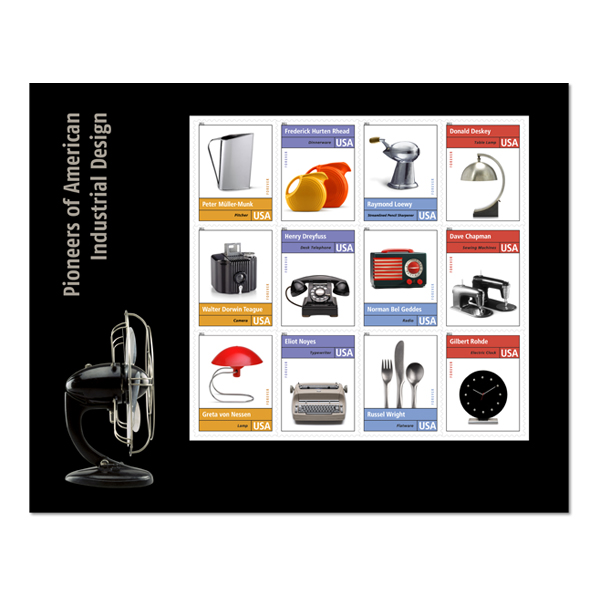 While digging around on the Post Office’s website, I came across some other great stamps, too. I don’t send many letters or envelopes anymore, but when I do I like to spice it up. In my career, there have been times where we’ve used a particular stamp design to add an exclamation point to a concept or even created a special mark for a postal machine.
While digging around on the Post Office’s website, I came across some other great stamps, too. I don’t send many letters or envelopes anymore, but when I do I like to spice it up. In my career, there have been times where we’ve used a particular stamp design to add an exclamation point to a concept or even created a special mark for a postal machine.
A waste, you say? A stamp’s a stamp? Look at that Russel Wright Pinch flatware on that stamp. That’s just a fork, yes. A fork that’s got a place in the Museum of Modern Art.
When you send a handwritten letter these days you’re already doing something to stand out. Add an exclamation point by bypassing commodity postage and using a stamp that says something about you or your company.
It’s small, poignant detail that few people take the time to think through in our email world.
Tour de France season is here!
This year’s Tour de France has been one for the record books already — mainly for a string of bizarre serious crashes that have taken out several significant GC contenders. I love watching the Tour de France. Listening to the Phil- and Paul-isms and just about every syllable that comes from Bob Roll’s mouth. That anyone can ride a bike that far for that long over that terrain amazes me. While doping issues will probably always cloud the sport and its athletes, I admire these guys for what they accomplish.
Talking about the ups and downs of this year’s tour these past few days has reminded me of a blog post I wrote a year or so ago. In it I recapped what happened when a popular cyclist-blogger wrote a cover letter to Johan Bruyneel trying to hook on to the wheel of Team RadioShack.
If you never read it, it’s a great lesson in the power of social media. Plus, it’s just a great story. Read it here.
Have a few more minutes? Take five to enjoy the blog post that started me down the Fat Cyclist trail, An Open Letter to Assos. This should be mandatory reading for anyone who cycles, has ever purchased a cycling bib or has customers for that matter.
Do you love freelance billing?
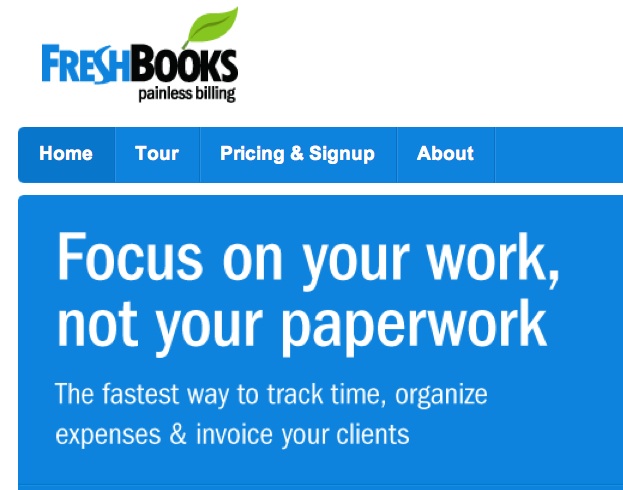 I’ve already blogged my love for Freshbooks once this year and here I go again. But this relationship is going far deeper than my initial rushing crush.
I’ve already blogged my love for Freshbooks once this year and here I go again. But this relationship is going far deeper than my initial rushing crush.
First, for those of you not in the know, Freshbooks is online invoicing, time tracking and billing software favored by creative types and future Internet moguls. Not something you would ordinarily find yourself getting excited about. Not in a million years. Until you start freelancing for a living without a lick of business sense and have a painful late-90’s method of managing invoices. Then you get interested, quickly.
Painless billing is what Freshbooks aims to offer and boy do they. They deliver economic salvation in an easy-to-use manner that’s not so simple you feel like a moron. Plus, they deliver it with a refreshing wit and clarity that I admire. So if invoicing and financials are painful for you as a freelancer, check them out. I am grateful for Freshbooks every day. Especially billing days.
So what else sets them apart? They like their customers and they know what they do. They like to help their customers do more of what they do. Freshbookers can enjoy informal gatherings where they can get to know the company folks and get to know others like themselves in the community. I had breakfast this weekend with a crew of Freshbookers organized by John Coates and made some valuable connections and met some truly interesting folks. Bloggers. Web developers. Designers. Web designers. Company owners. A great mix. The conversations were invigorating, insightful and inspiring both creatively and personally. All that thanks to my invoicing software.
I would never have expected so much from them, but I guess I should have known. Freshbooks the software absolutely rocks. Freshbooks the company is equally spot-on.
R Blogging
Blogged for my friends at Riggs Partners earlier this week. You can check out my post here or check out their fantastic behind-the-scenes photos of George Fulton from a recent photo shoot. Hi-yah!
On my nightstand: Great Book List
Heading for a vacation soon? Need something to occupy your mind for a few hours? Here’s list of book recommendations from avid reader and friend Cathy Monetti. I can vouch for about half of these books. Excellent reads. Pick a few up for your next trip!
1) Cold Mountain
2) The Red Tent
3) On Agate Hill
4) The Poisonwood Bible
5) The Kite Runner
6) Eat. Pray, Love
7) Water for Elephants
8) Evening
9) The Year of Magical Thinking
10) East of Eden
11) Jane Eyre
12) Cannery Row
13) Cry the Beloved Country
14) A Prayer for Owen Meany
15) Colony
16) Wicked
17) The Shell Seekers
18) The Great Gatsby
19) Oral History
20) One Thousand White Women
21) Charlie Bland
22) All The Little Live Things
23) The Unlikely Lavender Queen
24) The Prince of Tides
25) The Help
26) Major Pettigrew’s Last Stand
27) The Happiness Project
28) A Moveable Feast
29) The Elegance of the Hedgehog
30) Born to Run
31) Olive Kittridge
32) The Story of Edgar Sawtelle
33) Loving Frank
What have you read lately and loved?
Today’s Desk
I am sitting in our trusted tire place, working. Which is fantastic because I have a lot of work to do today.
It’s pretty amazing to think about everything we can do thanks to technology. Even as I sit in front of a TV as old as me, I am zipping through my to-do list: blogging, editing, writing as well as I would at my “real” work desk. I am wirelessly making my day happen, squeezing every moment of productivity out of my wait.
Makes me think today’s desk is more mindset than a cherry perch. You can do things when you need to, where you need to.
Which is great for a freelance writer like me.
Solar Decathlon spotlights Appalachian ingenuity.
If I wasn’t a writer, I would be an architect. It absolutely fascinates me.
I live in and love my 1957 atomic ranch despite its glaring efficiency inadequacies. I love new modern like this affordable collaboration of Celtic Works and Studio 2LR. I covet the Lego Fallingwater set. Sometimes I even drive by the tiny Lustron house off Trenholm Road for absolutely no reason at all.
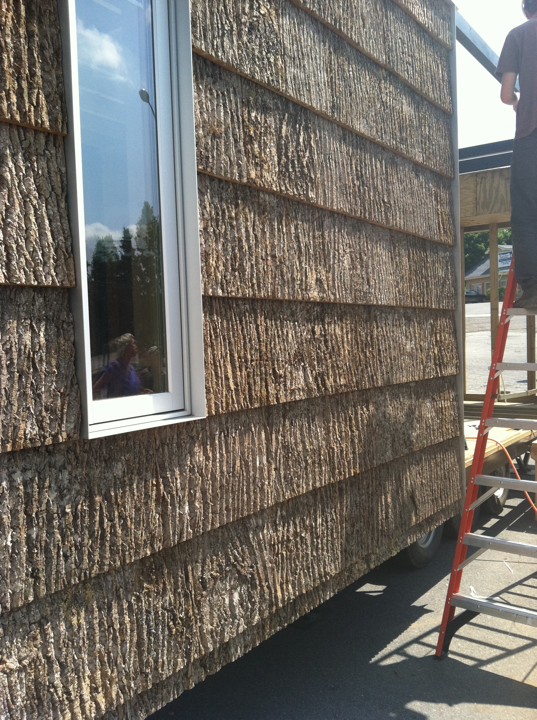 So when I got the chance to take a guided tour of Appalachian State University’s entry in the U.S. Department of Energy’s Solar Decathlon, I immediately donned a hard hat and followed faculty advisor and friend Dr. Jamie Russell for an inside look at designing and building a zero-energy home.
So when I got the chance to take a guided tour of Appalachian State University’s entry in the U.S. Department of Energy’s Solar Decathlon, I immediately donned a hard hat and followed faculty advisor and friend Dr. Jamie Russell for an inside look at designing and building a zero-energy home.
But first, a little bragging is in order. Appalachian State’s Solar Homestead was one of 20 entries selected in the world. They are the lone representative from the state of North Carolina and they are competing against several state-wide, multi-university teams. And, even though ASU’s entry is the only one without the support of an engineering or architectural program, they are not phased at all.
Every two years, the U.S. Department of Energy Solar Decathlon challenges collegiate teams to design, build and operate solar-powered houses that are cost-effective, energy-efficient and attractive. The contest educates the public about energy-efficient construction, provides a unique experience for students, encourages collaboration among the disciplines, and showcases a whole-home approach to building design and construction.
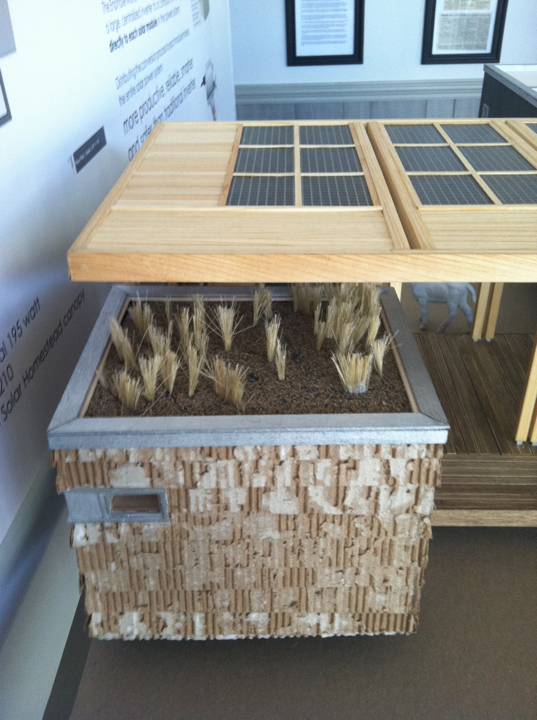 You can learn more about ASU’s Solar Homestead here or watch this beautiful video that showcases the project and the many smart, bright minds behind it. Keep up with construction on Facebook and Flickr. Even better, visit The Solar Homestead and the other 19 entries in person from September 23-October 2 on the National Mall in Washington, DC.
You can learn more about ASU’s Solar Homestead here or watch this beautiful video that showcases the project and the many smart, bright minds behind it. Keep up with construction on Facebook and Flickr. Even better, visit The Solar Homestead and the other 19 entries in person from September 23-October 2 on the National Mall in Washington, DC.
And what will you see in The Solar Homestead? Wood flooring repurposed from storm-damaged white oak trees at the Biltmore Estate — trees older than the estate itself. Photovoltaic outbuilding modules that power the main home. Several advances in solar power generation that I can’t even begin to explain or understand.
But the best thing to me is that Appalachian spirit of self-sufficiency. They’re not just in it; they are in it to win it.
On my nightstand: Food and farming books?
Over the past few years I’ve grown more and more attracted to gardening. My neighbor Eric has years of experience in these matters and he’s been so kind as to answer my many questions and address my pruning ineptitude. I am fumbling my way toward success, which I consider a valuable education.
 Eric was also integral in me learning the value and lure of fresh homegrown produce a la the Pinckney’s Produce community-supported agriculture program (CSA). We were lucky enough to get one of their weekly “shares” while they vacationed last summer and I was instantly hooked.
Eric was also integral in me learning the value and lure of fresh homegrown produce a la the Pinckney’s Produce community-supported agriculture program (CSA). We were lucky enough to get one of their weekly “shares” while they vacationed last summer and I was instantly hooked.
The share was a heaping bounty, but the two things I remember most were the corn and watermelon. I’d gotten so used to store-bought, trucked-in food that I’d lost my taste for pure, complex local, oh-so-fresh food. The corn was crisp, juicy and sweet. Really, some of the best corn I have ever had. The watermelon was tiny, but packed a punch of flavor that I haven’t tasted in years. It was a pretty alarming awakening.
Up until then, I’d never really thought about where my food came from or the fact that the side effects of mass production have dulled flavor to a ham-fisted nub. I vowed to make a go at gardening.
I didn’t enjoy much success the first year. Tomatoes: fail. Green beans: fail. Pickling cucumbers: huge success. Romaine lettuce: huge success. While there were other wins and losses over that first season, it was a great education and good foundation for year two. Year two brought me a tiny winter garden, some of the best spinach I’ve ever had, more romaine lettuce, a stab at mixed-green “fancy” lettuce from seed, new varieties of peppers. There was more exploration and less fear. It also marked my first stab at composting and harvesting rainwater to feed my little crop.
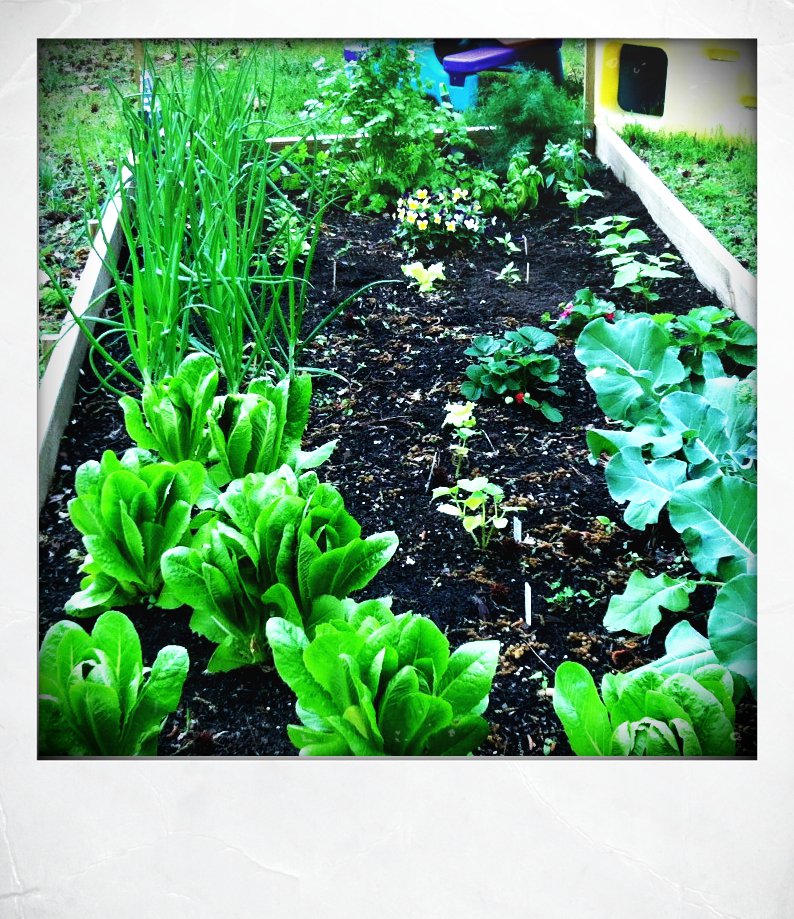 My food education also continued. I subscribed to the CSA’s winter share and learned about and tried new vegetables I wouldn’t otherwise buy. I read and highly recommend Barbara Kingsolver’s Animal, Vegetable, Miracle, a tribute to living off of what you grow and how the food you eat manages to get to your plate. Cheap: The High Cost of Discount Culture (more on that here) provided a surprise education on 21st century shrimp production. I am now reading Growing a Farmer by Kurt Timmermeister, which explores how one man’s love for a four-acre tract of land grew into Kurtwood Farm.
My food education also continued. I subscribed to the CSA’s winter share and learned about and tried new vegetables I wouldn’t otherwise buy. I read and highly recommend Barbara Kingsolver’s Animal, Vegetable, Miracle, a tribute to living off of what you grow and how the food you eat manages to get to your plate. Cheap: The High Cost of Discount Culture (more on that here) provided a surprise education on 21st century shrimp production. I am now reading Growing a Farmer by Kurt Timmermeister, which explores how one man’s love for a four-acre tract of land grew into Kurtwood Farm.
The past few years have been a great education for me. I pay more attention to food and don’t take its presence for granted. There’s something inherently satisfying about your own sweat, tears and ingenuity growing what’s on your plate. And just as important to have some idea how the rest of it got there, too.
